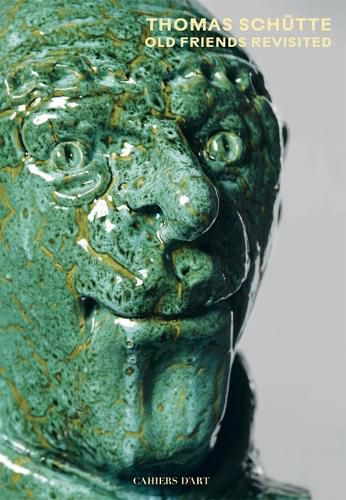Readings Newsletter
Become a Readings Member to make your shopping experience even easier.
Sign in or sign up for free!
You’re not far away from qualifying for FREE standard shipping within Australia
You’ve qualified for FREE standard shipping within Australia
The cart is loading…






Cahiers d'Art presents a new collaboration with German artist Thomas Schuette. The book features his series Old Friends Revisited, composed of 27 ceramic heads, each created in three unique casts, with different colors and glazes. The series is presented in its entirety and recounts the genesis of this masterly ensemble.
As the art historian Eric de Chassey writes in the book: "They each portray old men, whose features, although deeply individualized in the decrepitude of the flesh, are not meant to depict specific human beings. In 1994, Schuette stated that these 'criminal faces... are not realistic, but they really exist'. They conjure the characters of Beckett's last play, What Where, shrouded so that they appear 'as floating faces dissolving in and out of the TV screen,' mask-like, dramatically lit so that the marks and wrinkles on their faces are prominent. Though expressionless, the four protagonists flatly utter repetitive sentences that hint that they have been both torturers and tortured, pathetic and tragic figures at the same time. Just like Schuette's Old Friends, revisited, bound by their turpitudes and final destiny, mixing cruelty, humor, frailty, grandiloquence, and decorativeness, as the most fitting way to address our current situation.
$9.00 standard shipping within Australia
FREE standard shipping within Australia for orders over $100.00
Express & International shipping calculated at checkout
Cahiers d'Art presents a new collaboration with German artist Thomas Schuette. The book features his series Old Friends Revisited, composed of 27 ceramic heads, each created in three unique casts, with different colors and glazes. The series is presented in its entirety and recounts the genesis of this masterly ensemble.
As the art historian Eric de Chassey writes in the book: "They each portray old men, whose features, although deeply individualized in the decrepitude of the flesh, are not meant to depict specific human beings. In 1994, Schuette stated that these 'criminal faces... are not realistic, but they really exist'. They conjure the characters of Beckett's last play, What Where, shrouded so that they appear 'as floating faces dissolving in and out of the TV screen,' mask-like, dramatically lit so that the marks and wrinkles on their faces are prominent. Though expressionless, the four protagonists flatly utter repetitive sentences that hint that they have been both torturers and tortured, pathetic and tragic figures at the same time. Just like Schuette's Old Friends, revisited, bound by their turpitudes and final destiny, mixing cruelty, humor, frailty, grandiloquence, and decorativeness, as the most fitting way to address our current situation.